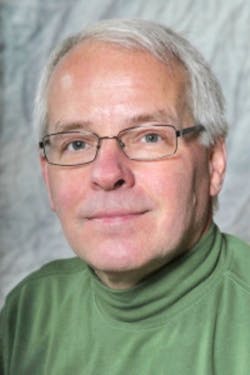Earlier this year, gravitational wave detection was called the biggest science story of 2016. Now the waves’ detection is becoming routine. Writes Marina Koren in The Atlantic, “Astronomers have detected gravitational waves coming from the collision of black holes somewhere in the universe—again.”
She continues, “The detection, announced Wednesday, marks the fourth time in less than two years that scientists have observed the cosmic phenomenon.”
The latest detection reported today involves a partnership of the LIGO Scientific Collaboration (LSC) and the Virgo collaboration, who together reported the first joint detection of gravitational waves with both the LIGO and the Virgo detectors, the latter located near Pisa, Italy. The three-detector observation was made on August 14, 2017, at 10:30:43 UTC.
LIGO reported that the detected gravitational waves “…were emitted during the final moments of the merger of two black holes with masses about 31 and 25 times the mass of the sun and located about 1.8 billion light-years away. The newly produced spinning black hole has about 53 times the mass of our sun, which means that about three solar masses were converted into gravitational-wave energy during the coalescence.”
“This is just the beginning of observations with the network enabled by Virgo and LIGO working together,” said David Shoemaker of MIT, LSC spokesperson, in a press release. “With the next observing run planned for Fall 2018 we can expect such detections weekly or even more often.”
“It is wonderful to see a first gravitational-wave signal in our brand new Advanced Virgo detector only two weeks after it officially started taking data,” added Jo van den Brand of Nikhef and VU University Amsterdam, spokesperson of the Virgo collaboration. “That’s a great reward after all the work done in the Advanced Virgo project to upgrade the instrument over the past six years.”
About the Author

Rick Nelson
Contributing Editor
Rick is currently Contributing Technical Editor. He was Executive Editor for EE in 2011-2018. Previously he served on several publications, including EDN and Vision Systems Design, and has received awards for signed editorials from the American Society of Business Publication Editors. He began as a design engineer at General Electric and Litton Industries and earned a BSEE degree from Penn State.
